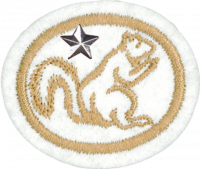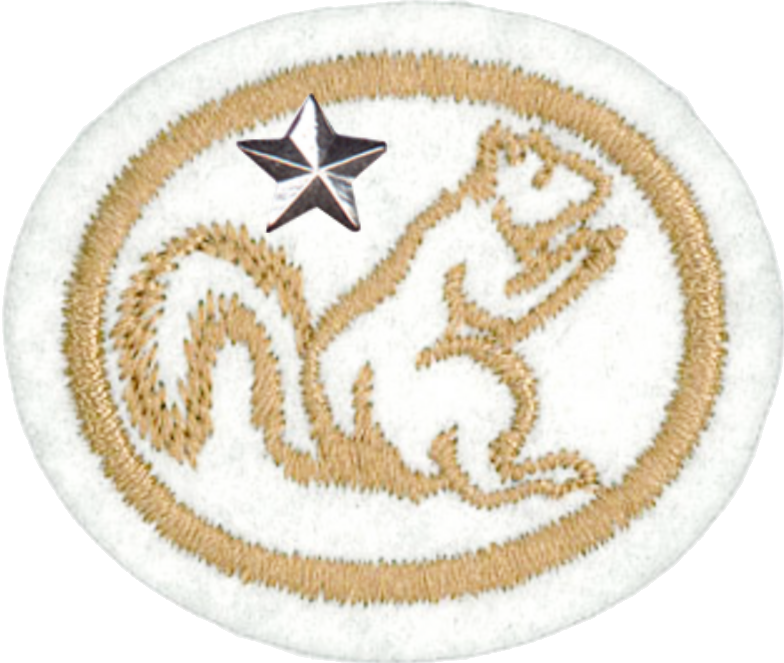Respuestas para la especialidad JA de Mamíferos - Avanzado
Nivel de destreza
2
Año
1949
Version
27.11.2025
Autoridad de aprobación
Asociación General
1
Para consejos e instrucciones, véase Mamíferos.
2
La mayoría de los mamíferos están protegidos por la ley en forma de temporadas de caza y licencias. Es ilegal matar a la mayoría de los mamíferos medianos a grandes en la mayor parte de los Estados Unidos sin una licencia, y estas licencias son solamente buenas durante ciertas estaciones. Los mamíferos que se consideran plagas o bichos, tales como ratas, ratones y marmotas, no están protegidos de esta manera. Pueden ser exterminados en cualquier momento. Pero los ciervos, las ardillas, las zarigüeyas, los castores, las ratas almizcleras, las comadrejas, los visones, las martas pescadoras, los linces, los leones de montaña y los lobos tienen una estación designada, durante la cual un cazador autorizado puede matarlos, o gozan de una prohibición total.
El propósito de estas leyes es estabilizar la población. En general, las estaciones de caza son en el otoño y esto es para permitir a los mamíferos reproducirse en la primavera y el verano, pero ser eliminados antes de que el invierno se establezca. En muchos casos, la caza es la única depredación que un mamífero sabe, y sin una temporada de caza, la población explotaría. Grandes poblaciones de ciervos, por ejemplo, no pueden sobrevivir el invierno, ya que los recursos alimenticios disponibles son limitados. Sin una temporada de caza, muchos morirían de hambre.
En otros casos, los mamíferos están protegidos porque han sido catalogados como en peligro de extinción. Esto generalmente significa que en el pasado, el hombre los cazó al borde de la extinción, o ha eliminado tanto del hábitat del animal que no puede sobrevivir sin protección legal.
3
Monotremes
Monotremes include the platypus, echidna, and several other species. Monotremes lay eggs. However, the egg is retained for some time within the mother, who actively provides the egg with nutrients. Monotremes also lactate, but have no defined nipples, excreting the milk from their mammary glands via openings in their skin.
Marsupials
Marsupials include kangaroos, opossums, and several other species. The pregnant female develops a kind of yolk sac in her womb which delivers nutrients to the embryo. The embryo is born at a very early stage of development (at about 4-5 weeks), upon which it crawls up its mother's belly and attaches itself to a nipple (which is located inside the pouch). It remains attached to the nipple for a number of weeks. The offspring later passes through a stage where it temporarily leaves the pouch, returning for warmth and nourishment. Most are found in Australia, New Guinea, and South America.
4
- Speed: Several species of antelope are able to outrun many other animals within hours of being born. If a predator cannot catch it, it cannot eat it either.
- Camouflage: Mother deer hide their spotted fawns in the forest. The spots on the fawns make it nearly impossible to see them in the dappled light.
- Teeth: Many mammals are armed with very sharp and long teeth. If cornered, they will first bare their teeth, and if pressed, they will bite! Raccoons are a prime example.
- Claws: Many mammals are also armed with long, sharp claws. These can be used offensively for catching prey, or defensively. A prime example would be the bear - nobody wants to tangle with one of those!
- Quills: Porcupines have specialized thick, stiff, hairs called spines or quills which can be ejected at will into the snout of a potential predator. These quills are barbed at the tips so that they do not come out easily. An animals that finds itself on the receiving end of this formidable weapon will retreat immediately.
- Odor: Skunks have the ability to spray a foul-smelling liquid on anything that threatens it. The smell aside, the spray can cause irritation and even temporary blindness, and is sufficiently powerful to be detected by even an insensitive human nose anywhere up to a mile downwind. Imagine how difficult this would make stalking other potential prey until that smell wears away!
5
- Tularemia
- Rabbits are a major agent for the transmission of Tularemia, which is also known as rabbit fever.
- Bubonic plague
- Rodents, primarily rats are responsible for the spread of bubonic plague.
- Trichinosis
- Trichinosis, also called trichinellosis, or trichiniasis, is a parasitic disease caused by eating raw or undercooked pork and wild game products infected with the larvae of a species of roundworm Trichinella spiralis, commonly called the trichina worm.
- Rabies
- About 50% of the rabies cases in the United States are found in raccoons, though dogs, cats, skunks, and bats are also common sources of the disease. All mammals are susceptible to rabies.
6
- a. Nombre
- b. Fecha observada
- c. Localidad
- d. Hábitat (bosque, campo, pantano)
- e. Hora del día
- f. Comportamiento (lo que el animal estaba haciendo)
This requirement requires either a lot of dedicated observation, or persistence over a long period of time. Get into the habit of logging the requested information (dates, localities, habitats, etc.), so that after a period of time, you will have all this data recorded.
If you prefer to dedicate time for observation so that you may earn the honor more quickly, it would be a good idea to earn the Animal Tracking honor first. Armed with the knowledge provided in this honor, you will be better equipped to detect that mammals have been in a given locality, and thus improve your chances of spotting them.
Many wild mammals are very easy to spot in North America, such as deer, squirrels, mice, rabbits, and raccoons. Others are more elusive, such as beavers, muskrats, members of the weasel family, wolves, skunks, porcupines, and bears. However, with persistence, you should be able to spot 15 species.
Perhaps you've recorded some of this information already without trying to earn the honor. Have you ever written in an email to a friend or your family about seeing some mammal? Go through your old email and look for it. The level of detail you wrote about may surprise you. Do you keep a blog? Look there! In fact, recording these in a blog may not be a bad idea.
If you are disciplined with your digital photographs, you may be able to look through your archive and find mammals you have photographed. The files containing the photos will likely have a date on them, and you should be able to extract the habitat, behavior, and perhaps the locality from the photo as well.


